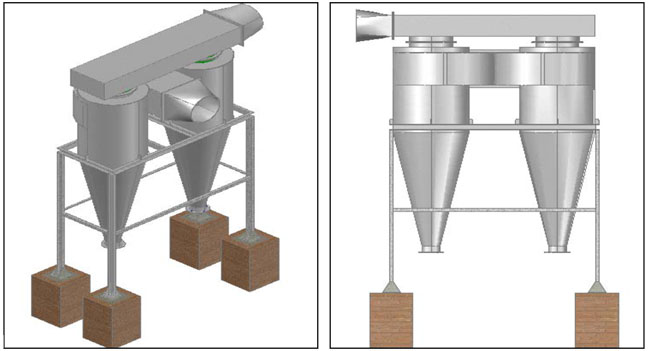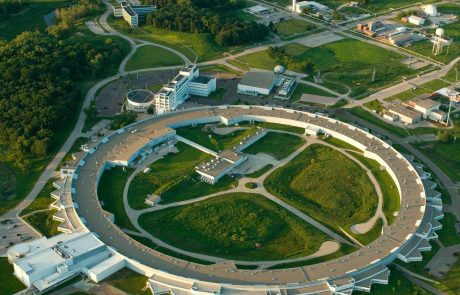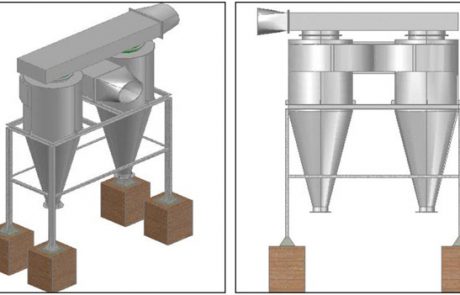About Induction Melting Furnace
It has some distinct advantages:
- Low Project Capital Cost
- Low Energy Cost
- Consumes steel scrap which is a major solid waste
- Environment Friendly, as it produces lower emission than Primary Blast Furnace
- Uses clean fuel i.e. electrical power
- Can be set up near source which saves transportation cost of raw material as well as finished goods.
Manufacturing Process
Induction Furnace Process includes melting of various types of steel scrap in a pot. The energy required for the melting process is provided by electrical induction. The feeding of raw material in the induction furnace is on intermittent basis. As one charge of scrap melts, slag is removed from the molten metal and certain alloys are added to achieve the desired grade of steel. Molten metal is then poured into refractory lined buckets from where it is further poured in different sizes moulds to get the desired size of steel cast . Ingot/Billet is allowed to cool down and then the product is separated from the moulds.
Flue gases are generated during melting of scrap. The characteristics and volume of these gases mainly depends upon type of scrap used in the furnace, i.e. with the degree of contamination in the Scrap. These flue gases need proper treatment for removal of dust particles/gases before being discharged into the atmosphere.
Air Pollution
Steel scrap comes from various sources and generally has contaminants/coating etc on it. When this scrap is heated contamination/coating etc disintegrates from steel and comes out either as slag or becomes air borne, thus causing air pollution. The major source of Air Pollution is:
- Dust & Dirt
- Rust
- Oil & Grease
- Paint
- Galvanized Iron
- PVC Coated Steel
Capacity calculation of required equipment
The volumetric capacity of Air Pollution cannot be judged as such, but fair engineering estimation can be made with input data like:
- Furnace Capacity
- Power Rating in kWH
- Detailed Dimensions of Furnace
- Air Cooler Arrangement for workers at Furnace Platform
Selection of Technology for Equipment
Selection of Technology for Equipment in an Air Pollution Control System in case of a Steel Re-rolling Mill depends upon the fuel to be used:
- Scrubber based System for Oil / Gas Fired Furnaces
- Cyclone and Scrubber based System for Coal Fired Furnaces
Air Pollution Control System for Coal Fired Steel Re-rolling Mills

The Working of APCS for Steel Re-rolling Mill (Coal Fired)
About the system:
Air Pollution Control System for Steel Re-Rolling Mills (Coal Fired) is a Wet Type System. It consists of a high efficiency Cyclone followed by a Perforated Tray Type Wet Scrubber and a set of ID Fan and Stack.

Involute Cyclone
It is provided to capture the medium size particles from the furnace. The mechanism of the device is based on centrifugal forces entering in a tangential inlet cyclone. The medium size particles are arrested in the cyclone so that efficiency of scrubber with respect to fine particles increases.

Scrubber
- The Scrubber is in Stainless Steel construction to resist corrosion.
- pH balancing details are provided to maintain pH of feed water for longer life of equipment.
- Maintenance manholes are provided for trouble free operations of the Scrubber.
- Efficient Mist Eliminators are provided so that no moisture is carried over.
- Three partitioned tank is suggested for settling of suspended particles in the recycled water.

ID Fan
They have been provided for creating an adequate negative pressure in the system for efficient suction of gases.
- The ID FAN is statically and dynamically balanced.
- The ID fan is provided with adequate static pressure for such type of devices.
- The fan volume is adequate to provide required dynamic pressure at suction point.

Air Stack
- It is provided to release the treated gases into the atmosphere through an adequate chimney.
- The air stack is provided with aerodynamic bottom part to enable easy flue gas entry and for structural strength.
Ducting
Ducting and Bends are provided in the system for conveyance of gases at appropriate velocities and also to reduce the temperature by natural convection. An adequate length and size of ducting is necessary for proper conveyance of the gases at minimum pressure drop. The bends provided should be aerodynamic in shape so that there will be minimum pressure drop and no dust build up during operation. The main feature are
- All bends and fittings are aerodynamic resulting in min. pressure loss and min. dust accumulation.
- Provided with manual damper for adjusting suction draft of the ID Fan if required.

Isometric View of Air Pollution Control System

Plan View of Air Pollution Control System








